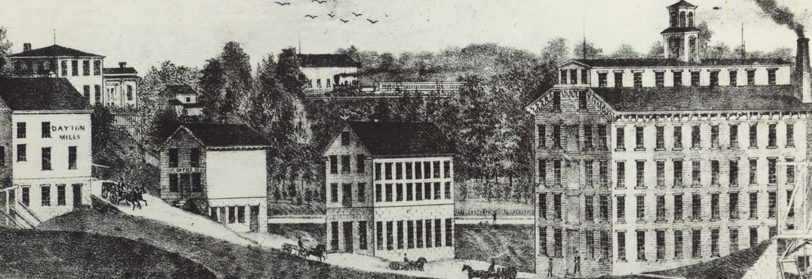The following is from The Ottawa Free Trader, June 2, 1888, p. 8, cols. 2-3
Dayton
Times are a little livelier now in this vicinity than they have been for some time past.
The paper mill has started up again, and is getting a number of car loads of baled straw.
The tile works are running right along and are shipping a considerable quantity of drain tile of the very best quality. They are also shipping a lot of fire clay, having received an order for one hundred tons to be shipped immediately to Chicago. Users of clay are beginning to learn that we have the very best quality of fire clay in the county, and no doubt in the near future Dayton will contain a number of good substantial fire clay manufactories.
The roller mills are running on custom and merchant work as usual, and are manufacturing a first class article of straight grade roller flour. Try a sack and be convinced.
The horse collar works have cut down on their working force, as this is their usual dull season, and are manufacturing fly nets. With good crops this season, this firm anticipate a good trade during the fall and winter.
The old woolen mill property which has been run as a pressed brick factory by the Chicago and Dayton Brick Co., has been sold to an eastern firm who are putting it in shape for manufacturing purposes. We have not learned yet the intentions of the new company, but hope they have sufficient capital to do an extensive business.
The town is full of fishermen at present, and Landlord Timmons, of the Dayton Hotel, says he has had a good run of custom during the past two or three weeks.
Harding turned out a good sized fishing party last Saturday.
Mr. and Mrs. T. H. Green, and Miss Winnie Childs, of Morris were in Dayton over Sunday.
Mr. Bert W. Stadden and Miss Taylor, of Chicago, were in Dayton a few hours Sunday afternoon.
The river is a little higher on account of the late heavy rains.
Mr. William Hewitt is greatly improving the appearance of his piece of property by a coat of paint.
We find there is considerable interest taken in our extracts from California letters among various readers of your valuable paper in the county, as this information is reliable and not highly colored like the usual real estate men’s information. We wrote Mr. Butler of Puryn, Place Co., California, in regard to the fruit business being overdone in that State, and will give you his reply and other information: [content of letter not transcribed]
Occasional







 Hezekiah and Sarah (Davey) Bacon
Hezekiah and Sarah (Davey) Bacon 




